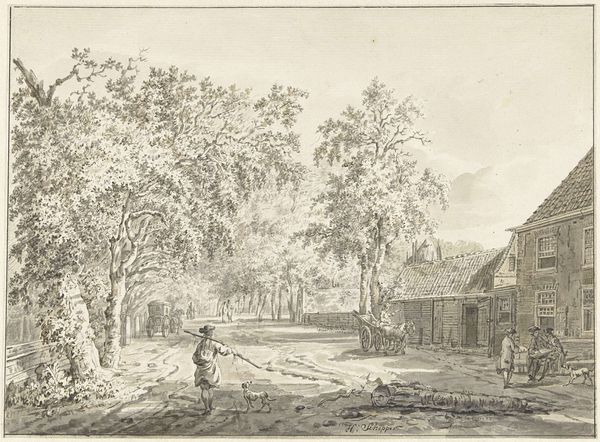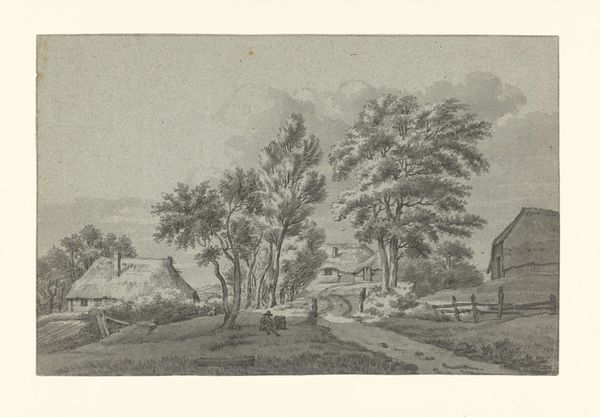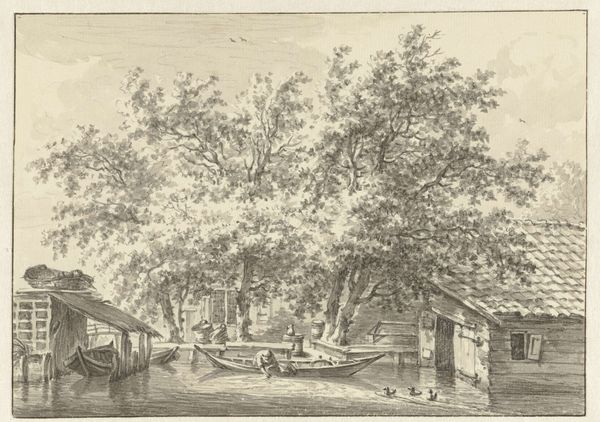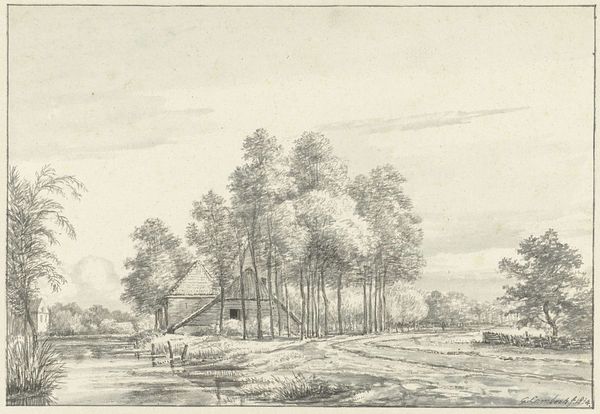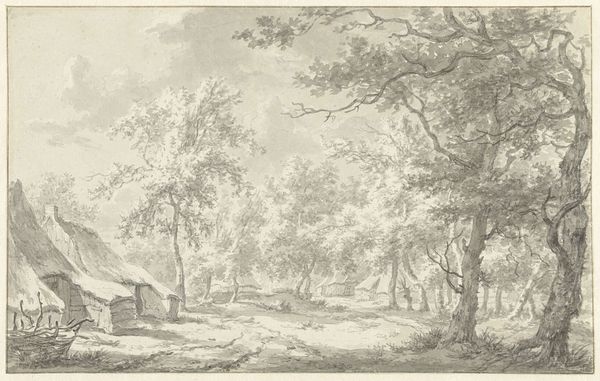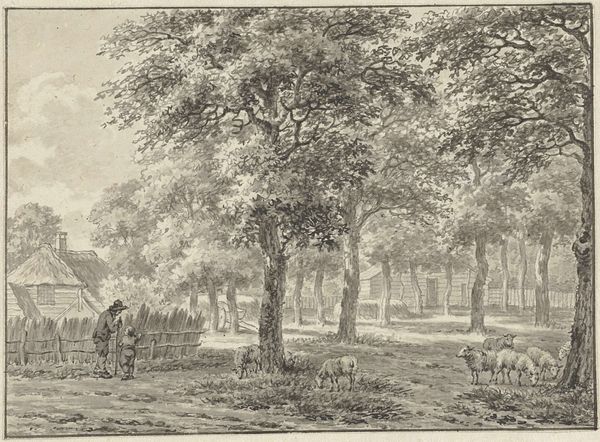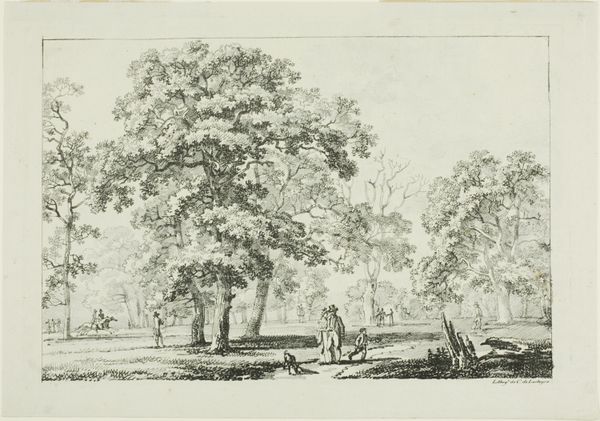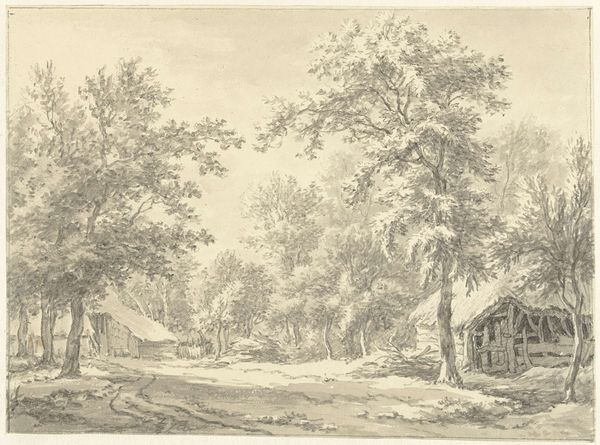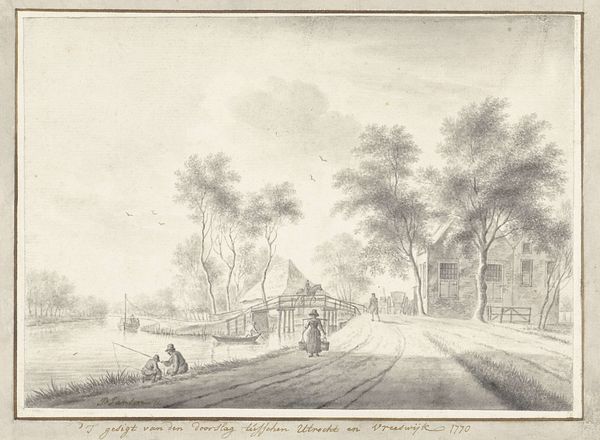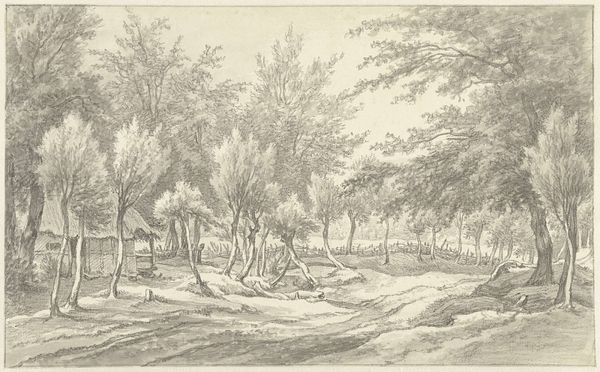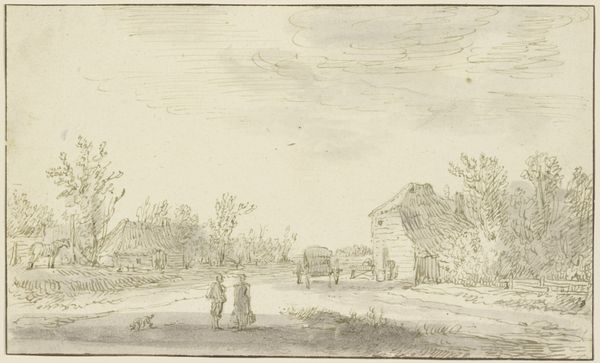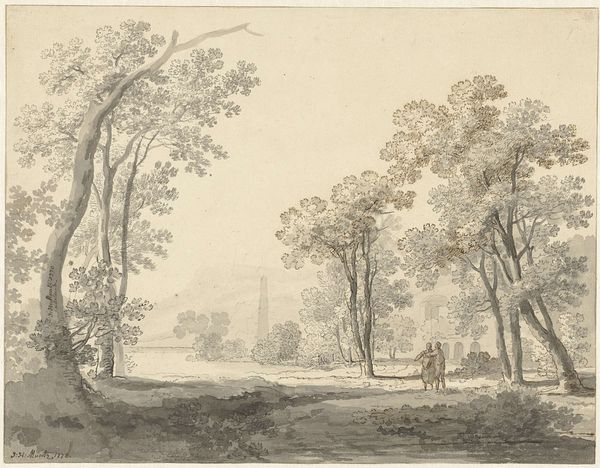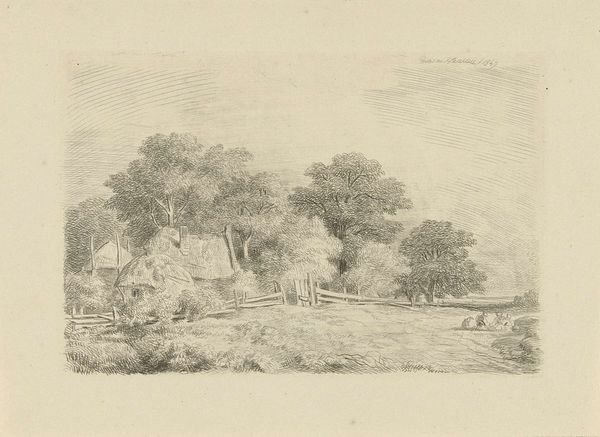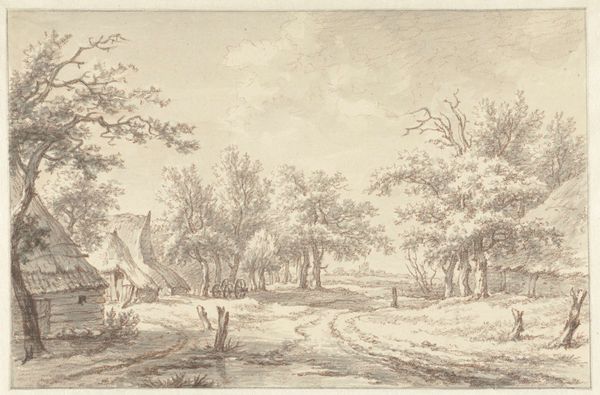
drawing, ink, pencil, pen
#
drawing
#
dutch-golden-age
#
pen sketch
#
pencil sketch
#
landscape
#
ink
#
sketchwork
#
pen-ink sketch
#
pencil
#
pen
#
realism
Dimensions: height 238 mm, width 325 mm
Copyright: Rijks Museum: Open Domain
Curator: This drawing, “Gezicht te Borger in Drenthe,” offers us a glimpse into a quiet moment captured by Egbert van Drielst. Created sometime between 1755 and 1818, it's rendered with delicate pencil, pen, and ink work. What do you make of it? Editor: There's a dreamlike quality to it. The monochromatic palette, almost sepia-toned, washes the scene in a kind of nostalgia. It evokes a feeling of quietude, like the world is holding its breath. Curator: Absolutely. Van Drielst masterfully uses the mediums to evoke the serenity. I find it interesting how a landscape drawing, often associated with objective observation, can be so laden with feeling. What socio-historical influences can we infer that drove this technique? Editor: During the late 18th century, there was a growing fascination with the Dutch landscape, not just as scenery, but as an embodiment of national identity. Drawing became an accessible medium for capturing and celebrating that landscape outside the sphere of religious or aristocratic commissions, reflecting a wider interest in ordinary life and natural beauty. This seems to tie in perfectly with the artist's execution and vision. Curator: Yes, landscape became almost a stage for expressing national sentiment and also I’m thinking of the rise of romanticism – that heightened focus on personal emotions. What looks like a straightforward sketch really resonates as a response, perhaps to growing urbanisation at the time. People moving back to a kind of pastoral longing, captured beautifully here. There’s almost a melancholic tone isn't there? The overcast sky and stillness lend to this. Editor: There is. And yet, it’s not just passive melancholia. Note the inclusion of those figures and their loaded donkey cart. This is Drenthe, and this portrays Drenthe and all its rustic nature and work at this time. It feels as though there is a deliberate political decision to focus on these realities within this community. Curator: A quiet declaration in pen and ink. I agree with you. A perfect way to define Realism and Realist techniques, decades before Courbet! Editor: Precisely. Seeing the beauty in simplicity, that quiet narrative of the everyday. A humble testament. Curator: It truly encapsulates an important movement, a perfect mirror to the landscape it represents. Editor: Yes, something very grounding about seeing it. Makes you want to take a deep breath and look closely at the world.
Comments
No comments
Be the first to comment and join the conversation on the ultimate creative platform.
